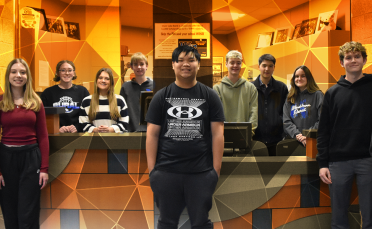Accelerate Your Child's Career with Industry-Recognized Certifications

As part of the Kansas Department of Education’s school redesign process, more emphasis is being placed on increasing career awareness and exploration starting with upper elementary/middle school students. As they continue their schooling, the next step is more specific skill training and work-based learning opportunities in middle and high school to begin preparing for a variety of career paths.
Market Value Assets
Our state is working toward a day when most, if not all, students incorporate what’s called a market value asset (MVA) into their individualized plan of study (IPS) in high school. Market value asset is a term created by Susan Wally and the leadership team at PREP-KC to identify industry-valued and recognized skills and accomplishments that can be attained in high school. MVAs are defined as:
- completing nine or more college credits
- earning an industry-recognized credential
- completing an internship, client project or other vetted workplace learning experience
MVAs give students the skills they need — as well as standardized proof of the skills employers want to see — to more quickly and easily transition from school to a postsecondary education and/or the workforce. The goal is to help more students graduate from high school with what’s called a “diploma plus.” This means they graduate with at least one of these MVAs in addition to their regular high school diploma, which will make it easier for them to start a family-sustaining career with the option of continuing their postsecondary education — possibly with tuition reimbursement from their employer.
Industry-Recognized Certifications
One type of MVA is an industry-recognized certification (IRC). Earning IRCs is one way to accelerate career opportunities for students in many different industries. I highly recommend you work with your son or daughter’s counselor to see if they can earn an IRC in high school or plan to build upon high school courses after graduation to earn an IRC quickly through a community or technical college in your area.
What could earning an IRC look like in our high schools? Let’s take the anatomy and physiology classes I used to teach at Sterling High School. The way things traditionally worked is that students who enrolled in my A&P classes could earn five hours of college credit for satisfactorily completing my course. With the opportunity to get these credits at a reduced tuition rate, it was a very good deal. At the end of the day, though, it was simply five hours of college credit. Those credits need to be applied toward some goal. They could help fulfill general education requirements toward a four-year degree or be applied toward an associate degree in a health sciences program. The credit hours on their own, though, don’t open many doors for career opportunities.
However, if my students had been able to take what they learned in this anatomy and physiology class and then complete their certified nurse assistant (CNA) certification at the end, that would open the door to start to a career in the healthcare industry. This is the area of highest demand in Kansas with opportunities to work anywhere across the state. This industry-recognized CNA certification is often the first step for healthcare professionals, who then go on to complete LPN, RN and other certifications in the industry. IRCs such as the CNA give students a practical credential to show that what they learned has prepared them for a real-world job.
IRCs in In-Demand Fields
One field that is offering IRCs in many Kansas high schools and colleges is climate and energy control. Up to 40% of our nation’s energy use is in large buildings, and due to COVID, there is now an increased focus on indoor air quality. This is an industry where technicians can’t be trained fast enough to keep up with the job growth forecast for the next decade. In most cases, this industry training can be completed in two years or less, possibly even concurrently with high school courses.

Today, there are more and more high-wage, high-demand occupations in career and technical education (CTE) fields that require some post-secondary training, but most don’t require a four-year degree to get started. A few fields that are already offering IRC training in some Kansas high schools include:
- Construction and building trades
- Welding
- Energy/electricity
- Manufacturing
- Aviation
- Automotive technology
These IRCs can help open the door to opportunity for workers at a young age. Plus, the experience of gaining these credentials gives students connections with business and industry professionals that will prepare them for actual employment and can provide them with career mentors.
Once hired, many companies offer tuition reimbursement programs for employees seeking to complete a four-year degree. Therefore, if an employee wants to build upon what they’ve learned to later complete a college degree program, that opportunity is still there, but now with added financial assistance from the employer.
Want to learn how your child can add an IRC to their high school diploma to show they’re prepared for a real-world job? Visit with your school counselor and check out the opportunities offered by your high school and the community and technical colleges in your area. The opportunities available today at many Kansas high schools will astound you.




